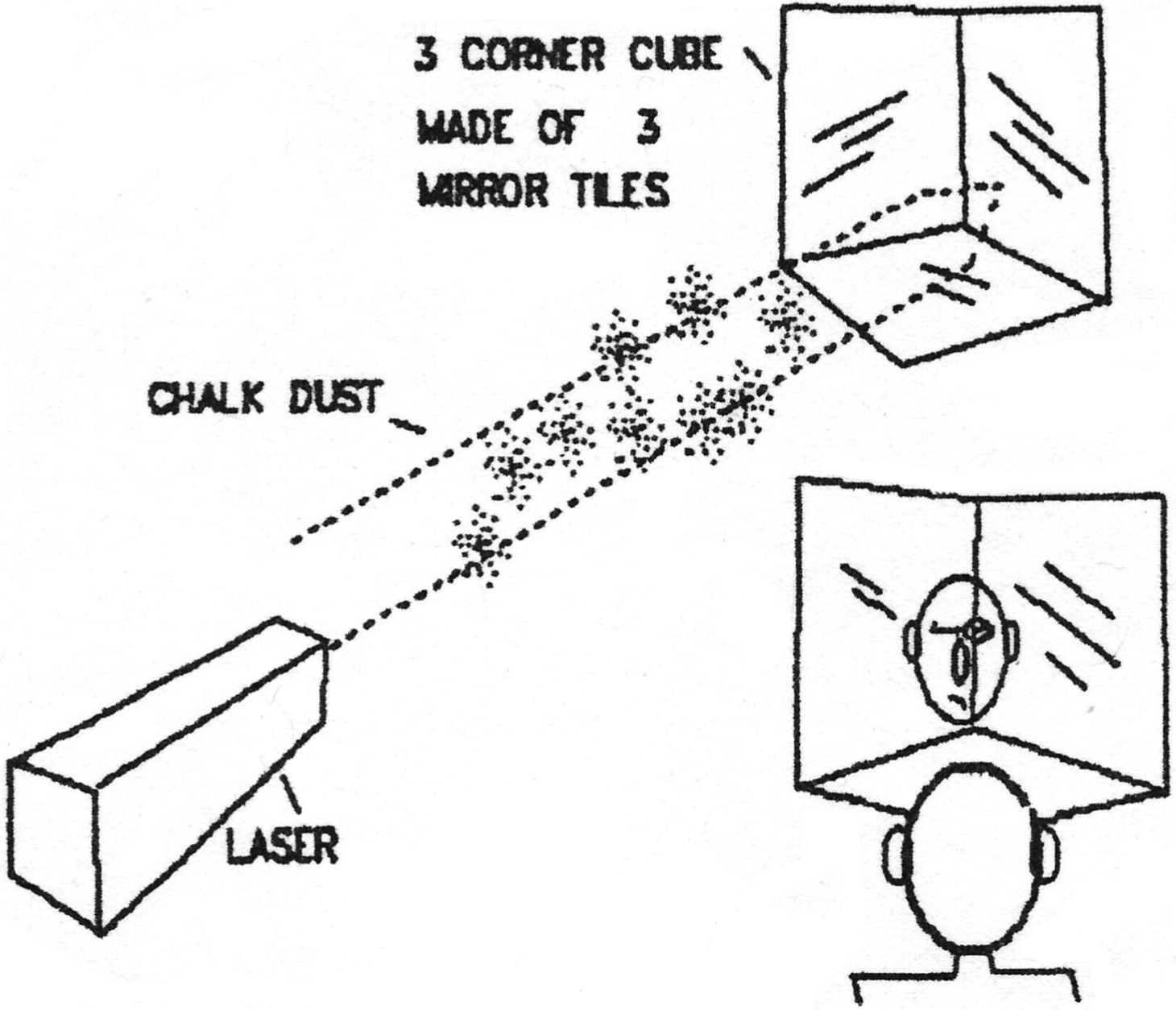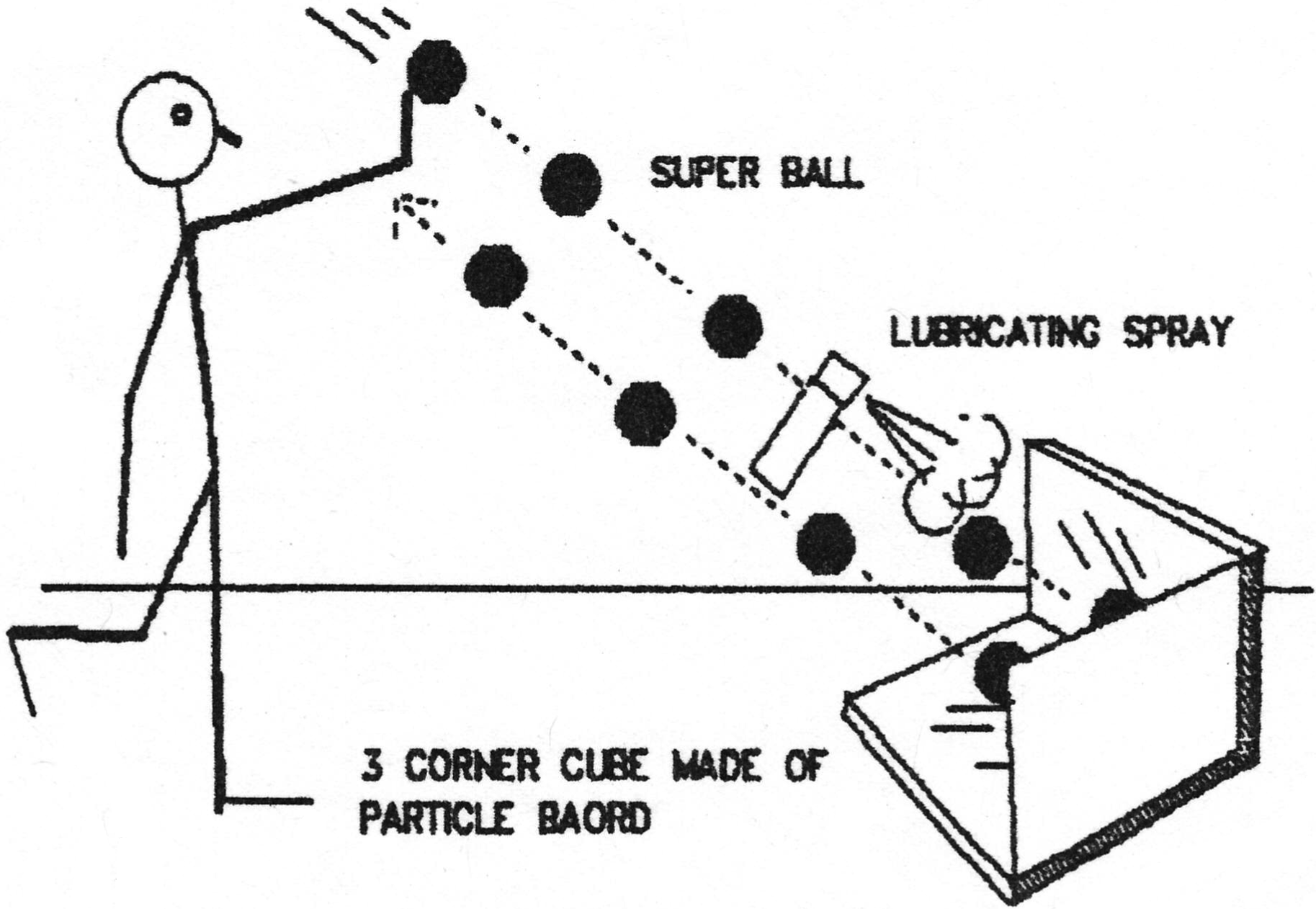Reflections
September 01, 1994 Filed in:
Demo CornerGeorge Vanderkuur, Malvern Collegiate, Toronto
A laser, chalk dust and right-angle corner made of mirror tiles show the retro-reflection of light from a corner cube mirror. (Safety note: use a low-power laser beam and take care to avoid directing the beam into the audience.) Students will also enjoy looking into the mirror and observing that the image of their face (or open eye) is always in the corner. Try this with one eye closed.

An array of corner cube “mirrors” (actually they were solid glass cubes) was left on the moon to retro-reflect a pulsed laser beam, making possible very accurate measurements of the earth-moon distance.
The retro-reflecting property of the corner cube can also be demonstrated
mechanically with a “super ball” or similar ball with a high coefficient of restitution. For this you need an unobstructed corner of a room or a corner constructed from formica or a smooth particle board. Because of friction and spin, a ball thrown at this corner will normally
not return on a parallel path. To remove the effect of spin and friction, the corner needs to be made very slippery. Soap solutions or silicone sprays work well on painted or formica covered surfaces. The best results are obtained when the corner is loosely lined with polyethylene film which has been sprayed with soapy water or WD-40.

The demonstration works even better out-of-doors where you can throw the ball faster and at a greater distance. Have your students try this and watch out — the ball bounces straight back. (Please use common sense and caution here.) With a little practice, you can nonchalantly throw the ball and have it return directly to your throwing hand. Throuwing two or three balls at once adds to the excitement and “risk”.
Column Editor: Ernie McFarland, Physics Department, University of Guelph, Guelph, Ontario, N1G 2W1 Tags: Astronomy, Light, Optics



